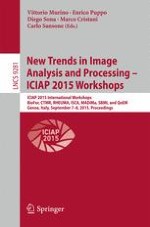This book constitutes the refereed proceedings of seven workshops held at the 18th International Conference on Image Analysis and Processing, ICIAP 2015, in Genoa, Italy, in September 2015: International Workshop on Recent Advances in Digital Security: Biometrics and Forensics, BioFor 2015; International Workshop on Color in Texture and Material Recognition, CTMR 2015; International Workshop on Medical Imaging in Rheumatology: Advanced applications for the analysis of in ammation and damage in the rheumatoid Joint, RHEUMA 2015; International Workshop on Image-Based Smart City Application, ISCA 2015; International Workshop on Multimedia Assisted Dietary Management, MADiMa 2015; International Workshop on Scene Background Modeling and initialization, SBMI 2015; and International Workshop on Image and Video Processing for Quality of Multimedia Experience, QoEM 2015.
